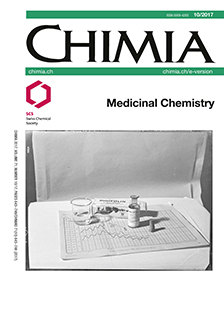Exploring Natural Product Fragments for Drug and Probe Discovery
DOI:
https://doi.org/10.2533/chimia.2017.653Keywords:
3d fragments, Fragment-based drug discovery, Natural product-fragments, Scaffolds, SconpAbstract
Fragment-based ligand discovery is a key technology to develop lead structures for drug discovery. The majority of the fragments employed so far is aromatic and sp2-configured, and there is a high demand of fragments with stereogenic centers. Natural products (NPs) are evolutionary selected ligands for a range of diverse macromolecular targets. Small-sized molecules – fragments – based on NPs may inherit the biological relevance of nature's treasure and could offer novel opportunities to engage challenging protein targets. An overview of this emerging research area is presented. The deconstruction of a complex NP into small fragments marks the beginning of this journey that is facilitated by the synthesis of NP-based 3D fragments. The emerging strategies in organic synthesis for either degradation of NPs to access fragments or de novo construction of fragments and their further combinations to chart novel biologically relevant chemical space is discussed.Downloads
Published
2017-10-25
Issue
Section
Scientific Articles
License
Copyright (c) 2017 Swiss Chemical Society

This work is licensed under a Creative Commons Attribution-NonCommercial 4.0 International License.
How to Cite
[1]
A. Pahl, H. Waldmann, K. Kumar, Chimia 2017, 71, 653, DOI: 10.2533/chimia.2017.653.







